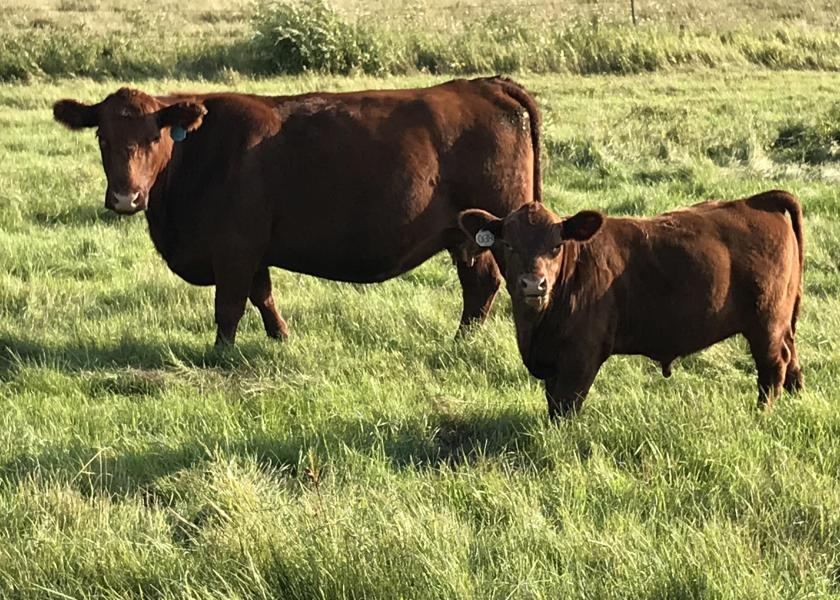Securing Profits In 2023: Cattle Price Expectations, Beware Of Unknown Market Downturn

As severe drought caused high cow liquidation rates over the last 18 to 24 months, the high cattle prices were not a matter of “if” but “when.”
However, in volatile markets, should cow-calf producers be optimistic about profits in 2023, despite challenges with forage availability and input costs?
A recent article written by Jay Parsons, University of Nebraska-Lincoln farm and ranch specialist at the Center for Agricultural Profitability, as well as John Hewlett, risk management specialist with the University of Wyoming, and Jeff Tranel, ag and business management specialist at Colorado State University, breaks down the cattle market and price expectations for the remainder of the year.
For many producers, the price of a weaned calf in October and November is their primary concern.
“One indicator of what prices might be like this fall is to use the October CME Feeder Cattle Futures price and add the expected local basis to it,” the article explains.
For example, with the October futures contract price for feeder cattle trading around $230 per cwt. during the first half of May, then by adding the local Nebraska basis for 500-600 pound steers in October ($15 to $36 above the CME contract settlement index, the projected price for 500+ lb. steers in Nebraska in October may be around $245 to $266 per cwt.

When it comes to accuracy, the article notes that over the last five years, this calculation has equaled a value within $5 per cwt of the actual price in four of the last five years, as seen in Table 2. The exception was in 2018 when it undershot the price by nearly $13, says the article.

Additionally, looking at the data following the drought of 2012 may be of value to producers.
“In both 2013 and 2014, the May price for October feeder cattle futures was considerably below the settlement index in October (below by $15.69 and $47.13, respectively). That is, prices moved higher than expected as 2013 and 2014 markets evolved. However, in 2015, as cattle inventories recovered, the May price was $23.20 per cwt. above where the contract ultimately settled in October,” the article explains.
Price protection in 2015 paid off as prices moved downward at a pace not reflected in the expectations in May, the article says.
For the remainder of 2023, cattle prices seem to be staying fairly strong, however, as seen in 2015, it’s impossible to know for certain when the market will turn.
“Cow-calf producers do not need to get too aggressive yet locking in prices. However, it may be a good time to look at inexpensive options to establish floor price protection with tools like put options or Livestock Risk Protection (LRP) insurance,” the experts suggest.
LRP insurance has seen changes in the last few years, making it more affordable and easier to use, including increases in the premium subsidy rates, moving the premium due date from the beginning to the end of the coverage period, and several changes expanding the availability.
“Current LRP insurance contracts expiring in mid-October or mid-November offer opportunities to protect the CME feeder cattle price at around $230 per cwt. for a little over $5 per cwt. premium cost,” the experts note.







